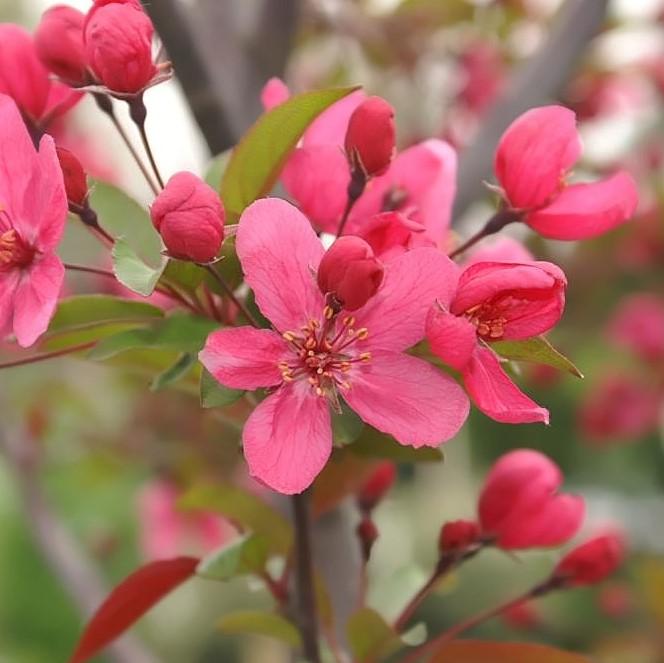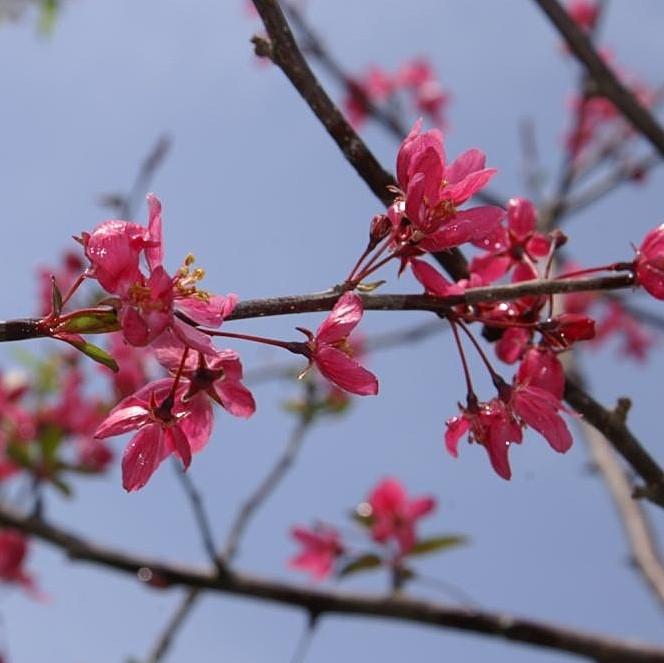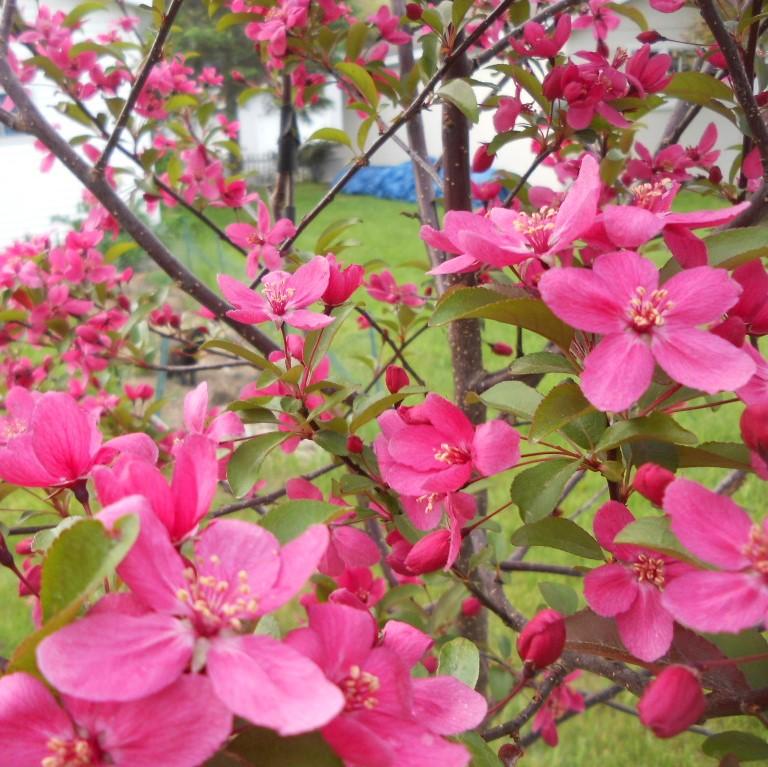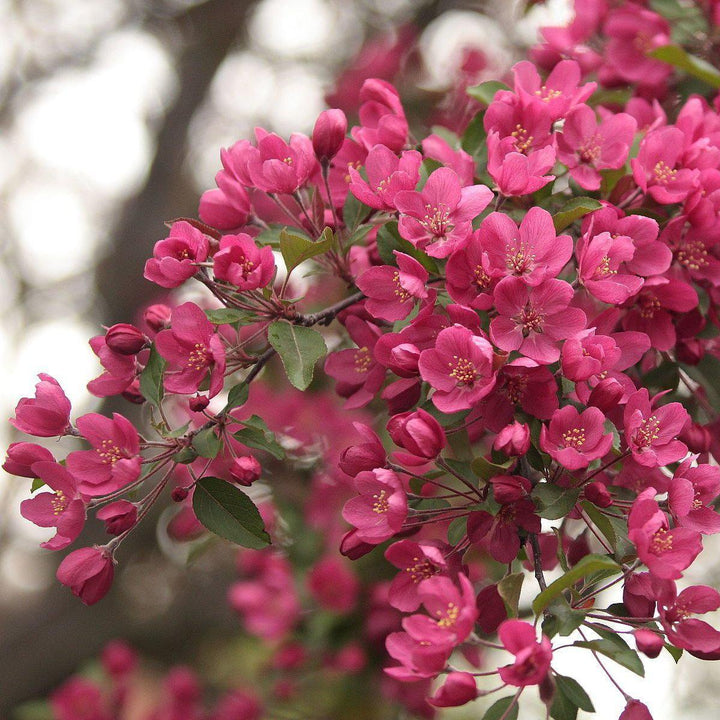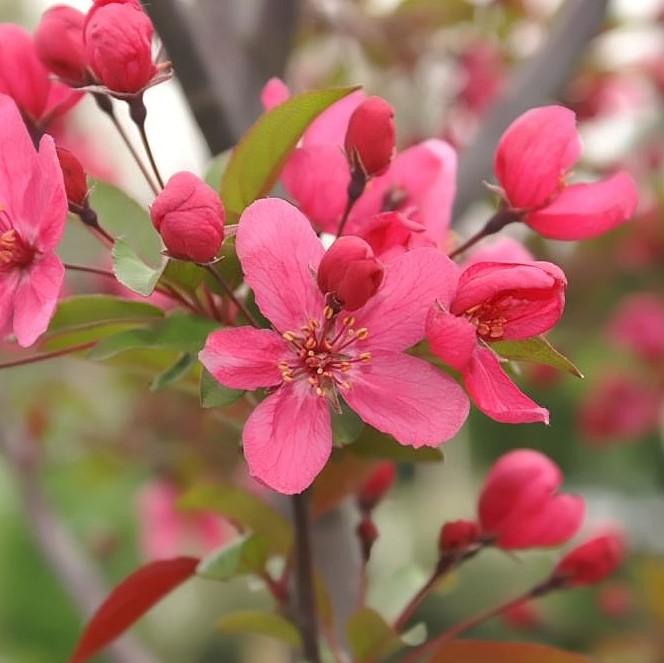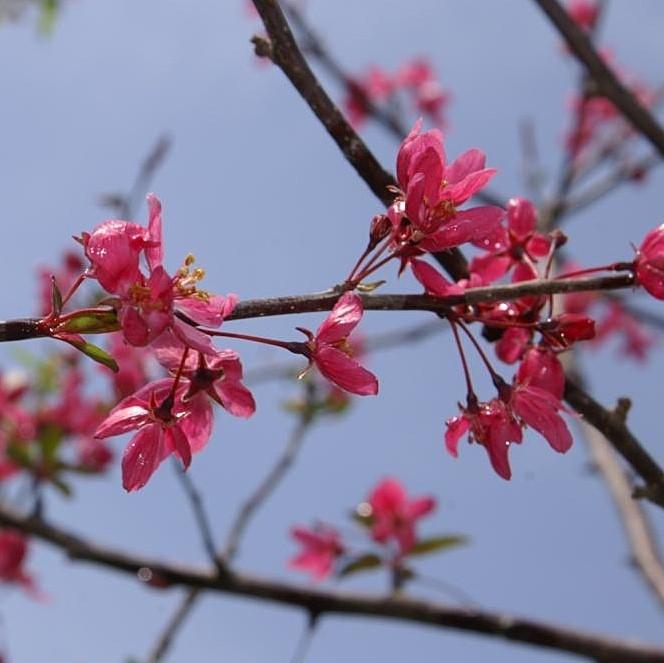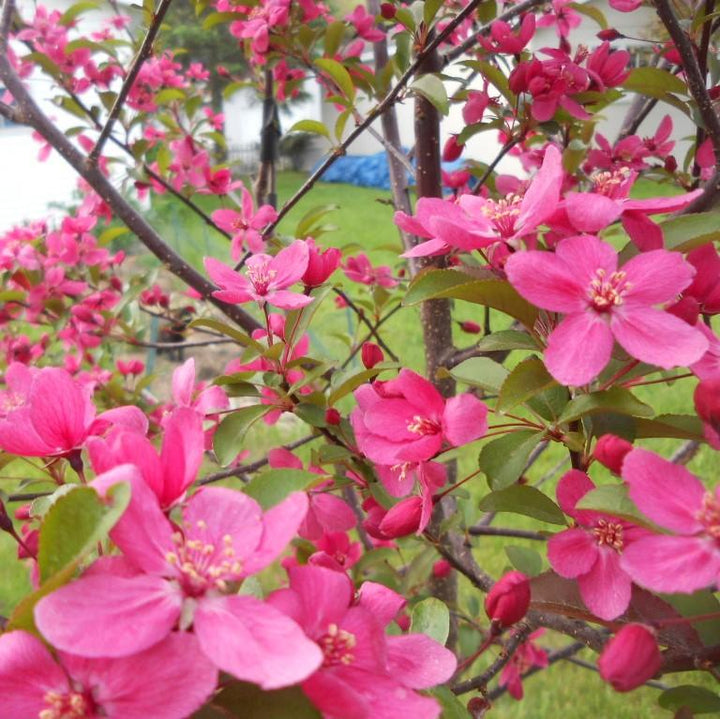Prairi Fire Crabapple
Malus 'Prairifire'
- In stock, ready to ship
- Backordered, shipping soon
- Locally Grown
The Prairifire Crabapple is a beautiful and popular ornamental tree known for its stunning spring blossoms and vibrant fruit. Here's everything you need to know about it:
-
Appearance: The Prairifire Crabapple is a deciduous tree that typically grows to a height of 15-20 feet (4.5-6 meters) with a spread of 15-25 feet (4.5-7.5 meters). It has a rounded shape and dense branching. The leaves are dark green, turning reddish-purple in the fall.
-
Flowers: In spring, the tree produces abundant clusters of deep pink to red flowers. These blossoms are not only visually appealing but also attract pollinators like bees and butterflies to your garden.
-
Fruit: After the flowers fade, small red fruits start to develop. These fruits are about 1/2 inch in diameter and persist into winter, providing a food source for birds. They can also add a pop of color to your landscape.
|
Type: |
Tree |
|
Origins: |
Hybrid |
|
Height: |
15' - 20’ |
|
Spread: |
15' - 20' |
|
Spacing: |
18’ |
|
USDA Hardiness Zone: |
4 - 8 |
|
Culture: |
Full Sun |
|
Bloom Color: |
Red |
|
Season of Interest: |
Spring, Summer, Fall |
MAINTENANCE NEEDS: Medium Maintenance. Regular water in first year, planted in well draining soil, fertilize yearly. Watch for scab, fire blight, rusts, leaf spot and powdery mildew. Potential pests include tent caterpillars, aphids, Japanese beetles, borers and scale. Spider mites may occur.
LANDSCAPE USES: Accents or Group Plantings, Borders, Wildlife Gardens, Shade Tree, Edible Garden, and Container.
COMPANION PLANTS: Gibraltar Azalea, Oakleaf Hydrangea, Gardenia Radicans
IMAGES: Hardyplants at English Wikipedia, Crab apple flowers, marked as public domain, more details on Wikimedia Commons, (2) Photo by David J. Stang, Malus Prairie Fire 0zz, CC BY-SA 4.0, (3) Photo by David J. Stang, Malus x Prairie Fire 0zz, CC BY-SA 4.0, (4) Photo by rochelle hartman, Blooming crabapple
Hahira Nursery takes pride in growing high-quality, fresh, healthy plants and ensuring they are delivered safely, on time, and with little to no damage so they are ready to be planted.
Despite all of our best efforts, once the plants have left our nursery, there are many variables outside of our control that can cause plants, flowers, trees, shrubs, or grasses to not thrive as they should. Plants are living organisms and are susceptible to a number of different environmental and care factors that are outside of our control.
Our goal is to build strong relationships with our customers and we always want to make things right, but we cannot always guarantee what happens once the plants are outside of our nursery, how you care for the plants, if they’re in the correct growing zones, weather damage, soil conditions, insect infestations, etc..
If you have any questions or concerns about a purchase you’ve made, please email us at info@hahiranursery.com and we will work with you on a case-by-case basis to the best of our ability.
Please note that all living organisms are not identical and their coloring, size, and shapes may differ from what you see online in our store. Each plant has its own characteristics that are impacted by the time of year, growth cycle, weather, and other elements which will cause them to look different than their photos.



